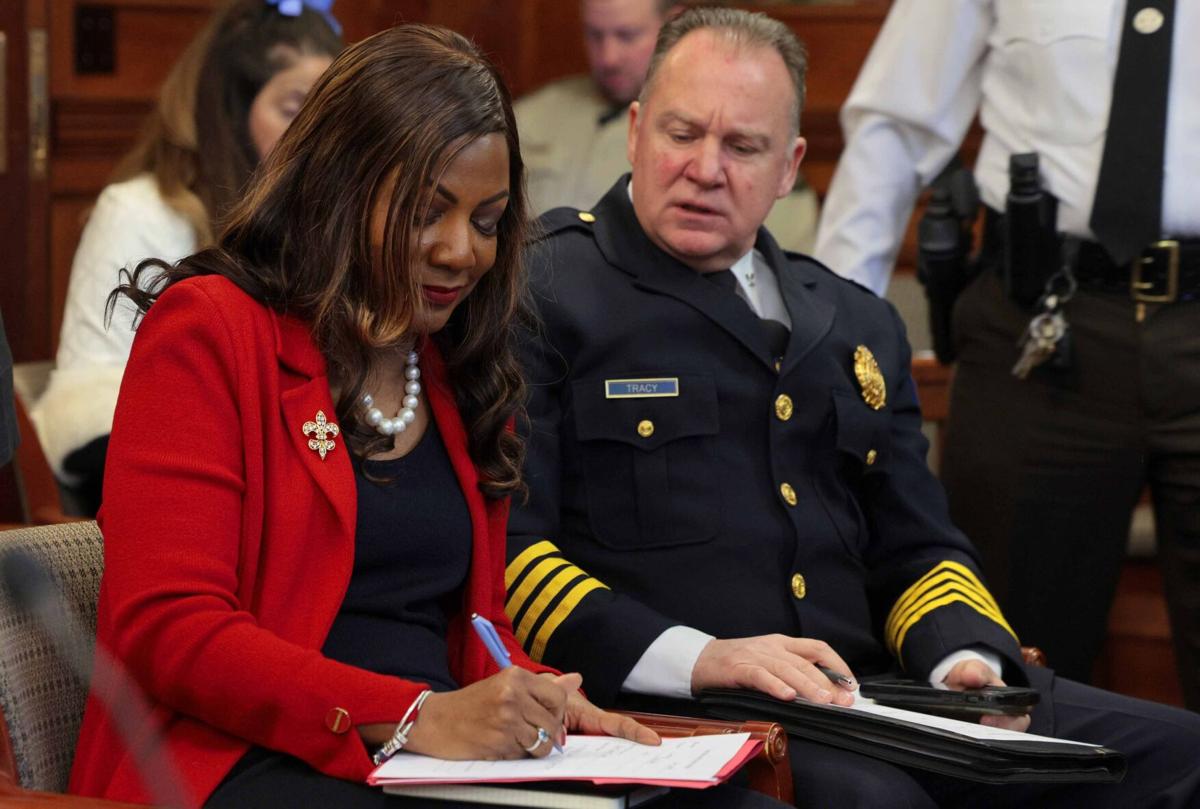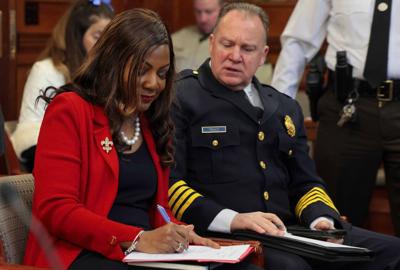ST. LOUIS — Mayor Tishaura O. Jones announced Wednesday that crime continued a historic fall in the first three months of the year — and took another swipe at the ongoing state takeover of city police.
Speaking at a quarterly press conference at police headquarters, Jones said homicide totals through March were the lowest since 2005. Shootings were down 39% over last year. Major crimes overall were down 28%.
“Residents, visitors and businesses in St Louis deserve to live in a safe city,” Jones said, “and we continue to make our city safer each and every day.”
The announcement marks the latest good news on crime — the homicide rate has dropped 40% in the past five years since a record high in 2020, and overall crime is down 14% since 2021.
It is also good news for the mayor. She stands for reelection on Tuesday, and her opponent, Alderwoman Cara Spencer, beat her by 35 percentage points in the March primary.
People are also reading…
Still, homicides have been falling nationwide since 2022. And big cities across the U.S. are reporting similar declines this year: Murders are down 43% in Los Angeles, 35% in New York City, and 22% in Chicago. Denver’s have been cut in half.
Police Chief Robert Tracy, sitting with Jones at the press conference along with other department brass, said he tries not to compare ӣ����Ƶ to other cities, and instead focuses on improvement.
He also brushed off a question about the January snowstorm depressing crime — overall crime dipped 35% to about 2,800 incidents in January, compared with the average over the previous four years. He said other cities got snow and had more trouble with crime. Homicides are up in Kansas City, for instance.
Instead, Tracy attributed the falling crime numbers largely to good police work.
He said homicide detectives are clearing cases at twice the average rate nationally. He said officers are building trust with residents at community meetings. And he said they’re using technology that tracks gunfire to get to scenes more quickly, render aid to victims, and gather evidence that could be used to track guns and shooters.
He acknowledged that it may take time for residents to feel safer, but he said everyone should be encouraged by the numbers.
“This is progress,” he said. “That’s what we want to see.”
He lauded Jones for her leadership over the past few years.
He noted her administration has provided multiple across-the-board raises for officers. He credited her work on violence prevention efforts and youth services with helping knock down juvenile shootings.
And he said she had given the department autonomy to do good work and kept politics out of promotions, transfers and discipline — notably, the same things Republicans in Jefferson City have said a new state-controlled police board would do.
Jones on Wednesday cast the law returning control of the police department to the state board as a threat to successful crimefighting strategies.
Tracy expressed hope the new board sees the department's progress and supports it.
“They do not want to see crime go up,” he said.
But he was less sure about a part of the new law requiring the city to devote more of its budget to police.
City budget analysts have said the new law could force the city to spend an extra $40 million per year on the department by 2029. When Gov. Mike Kehoe signed the state police board bill last week, he pointed specifically to the new spending rule as a way the state would help the department.
Tracy said he would appreciate new money for, say, officer raises.
The Kansas City police department, which is run by a state board, advertises starting salary for recruits at more than $65,000, while ӣ����Ƶ pays $57,000.
But Tracy noted there could be new costs, too. The department currently relies on city employees to hire its officers, fix up its cars and defend it in court.
Under state control, it may need to pay for those things itself.
Ultimately, he said, decisions on raises and the services will be up to the new board.
“And you know what?” he said. “They’ve got to be fiscally responsible.”
ӣ����Ƶ consistently lands on lists of most dangerous cities, but readers need to carefully look at how such lists are prepared.













